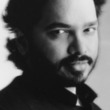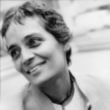A suitable boy : a novel
(Unknown)
Description
More Details
Notes
Similar Titles From NoveList
Similar Authors From NoveList
Published Reviews
Booklist Review
Long-winded is hardly the word for it! But given the publisher promotion behind this leviathan, reserve slips are likely to accumulate. There's a readership trade-off at play here: you get a good sense of time and place, but you have to put up with the seemingly interminable dialogues. The reader who can keep the plethora of characters straight and wade through all the chatting they do will be rewarded with an evocative domestic drama by an Indian about India--specifically in the decade following the subcontinent's independence. Seth focuses on four families, displaying domestic frustrations and successes played out against a backdrop of the clash between traditional and modern ways. But a novel about that huge land should be huge, and this is one to live in with luxury for many a day. (Reviewed Mar. 15, 1993)0060170123Brad Hooper
Publisher's Weekly Review
Seth previously made a splash with his 1986 novel in verse, The Golden Gate . Here he abandons the compression of poetry to produce an enormous novel that will enthrall most readers; those who are fazed by a marathon read, however, may gasp for mercy. Set in the post-colonial India of the 1950s, this sprawling saga involves four families--the Mehras, the Kapoors, the Chatterjis and the Khans--whose domestic crises illuminate the historical and social events of the era. Like an old-fashioned soap opera (or a Bombay talkie), the multi-charactered plot pits mothers against daughters, fathers against sons, Hindus against Muslims and small farmers against greedy landowners facing government-ordered dispossession. The story revolves around independent-minded Lata Mehra: Will she defy the stern order of her widowed upper-caste Hindu mother by marrying the Muslim youth she loves? The search for Lata's husband expands into a richly detailed and exotically vivid narrative that crisscrosses the fabric of India. Seth's panoramic scenes take the reader into law courts, religious processions, bloody riots, academia--even the shoe trade. Portraits of actual figures are incisive; the cameo of Indian Prime Minister Jawaharlal Nehru, for example, captures his high-minded, well-meaning indecision. Seth's point of view is both wry and affectionate, and his voluble, palpably atmospheric narrative teems with chaotic, irrepressible life. 100,000 first printing; $200,000 ad/promo; BOMC main selection; QPB alternate; author tour. (May) (c) Copyright PWxyz, LLC. All rights reserved
Library Journal Review
Opening and closing with a wedding, this novel is ostensibly the story of a Hindu family trying to find a suitable husband for their younger daughter, Lata. Who will the suitable boy turn out to be? The dashing Kabir, with whom Lata falls in love? The ambitious businessman whom Lata's mother favors? Or the sophisticated poet her relatives choose? The interwoven stories of four families linked by marriage form the background for this marital quest. It proves slow-moving at first, but the patient reader will inevitably be caught up in the compelling rhythms of a richly complex tale. The setting--India in the 1950s--is vividly realized: the enormity of the subcontinent, its overpowering heat, lush gardens, colorful festivals, and exotic foods. Memorable characters abound; not since Dickens has there been such a lively and idiosyncratic cast crowded into one novel. Drama is provided by the simmering conflict between Hindu and Muslim, which breaks out unexpectedly throughout the novel. This is old-fashioned storytelling at its best; highly recommended. BOMC and Quality Paperback alternates; previewed in Prepub Alert, LJ 1/93.-- Beth Ann Mills, New Rochelle P.L., N.Y. (c) Copyright 2010. Library Journals LLC, a wholly owned subsidiary of Media Source, Inc. No redistribution permitted.
Kirkus Book Review
Set in newly independent India, Nehru's early 1950's, this adipose saga counterbalances a book of social manners--the marrying off of a well-to-do educated young woman, Lata Mehra--with a historical account (even at the level of transcribed parliamentary debate) of the subcontinent trying to find its societal bearings vis-à-vis language, religion, and the redistribution of estate-lands taken off the hands of the elite. Set mainly in Brahmpur, the story encompasses four well-off families, with a focus mostly on the younger members--poets, academics, playboys, newlyweds--who stitch a pattern of peccadillo through their elders' expectations. Meanwhile, Seth, whose California novel in verse, The Golden Gate (1986), was clever and energetic in concept but dull and soapy in final effect, falls into the same trap here: lots of stuff obviously--at a marathon 1300-plus pages--but characters made out of cliché, with background-India the very stuffed pillow of local color that keeps them standing. The book, too, fairly squeaks with its own pleasure in itself, larded with poetry and a general recommendation of art over politics and money: the characters it spends the most time over are narcissists. Anyone wanting to read how a marriageable daughter can X-ray a whole society ought to let this cream-puff-wrapped-in-a-cinder-block pass and return to Tanizaki's classic Japanese masterpiece, The Makioka Sisters. Fat (the publishing world's delayed reparation for Rushdie's Satanic Verses?) but fatuous. (First printing of 100,000; Book-of- the-Month Dual Selection for May)
Library Journal Reviews
Opening and closing with a wedding, this novel is ostensibly the story of a Hindu family trying to find a suitable husband for their younger daughter, Lata. Who will the suitable boy turn out to be? The dashing Kabir, with whom Lata falls in love? The ambitious businessman whom Lata's mother favors? Or the sophisticated poet her relatives choose? The interwoven stories of four families linked by marriage form the background for this marital quest. It proves slow-moving at first, but the patient reader will inevitably be caught up in the compelling rhythms of a richly complex tale. The setting--India in the 1950s--is vividly realized: the enormity of the subcontinent, its overpowering heat, lush gardens, colorful festivals, and exotic foods. Memorable characters abound; not since Dickens has there been such a lively and idiosyncratic cast crowded into one novel. Drama is provided by the simmering conflict between Hindu and Muslim, which breaks out unexpectedly throughout the novel. This is old-fashioned storytelling at its best; highly recommended. BOMC and Quality Paperback alternates; previewed in Prepub Alert, LJ 1/93.-- Beth Ann Mills, New Rochelle P.L., N.Y. Copyright 1993 Cahners Business Information.
Publishers Weekly Reviews
Seth previously made a splash with his 1986 novel in verse, The Golden Gate . Here he abandons the compression of poetry to produce an enormous novel that will enthrall most readers; those who are fazed by a marathon read, however, may gasp for mercy. Set in the post-colonial India of the 1950s, this sprawling saga involves four families--the Mehras, the Kapoors, the Chatterjis and the Khans--whose domestic crises illuminate the historical and social events of the era. Like an old-fashioned soap opera (or a Bombay talkie), the multi-charactered plot pits mothers against daughters, fathers against sons, Hindus against Muslims and small farmers against greedy landowners facing government-ordered dispossession. The story revolves around independent-minded Lata Mehra: Will she defy the stern order of her widowed upper-caste Hindu mother by marrying the Muslim youth she loves? The search for Lata's husband expands into a richly detailed and exotically vivid narrative that crisscrosses the fabric of India. Seth's panoramic scenes take the reader into law courts, religious processions, bloody riots, academia--even the shoe trade. Portraits of actual figures are incisive; the cameo of Indian Prime Minister Jawaharlal Nehru, for example, captures his high-minded, well-meaning indecision. Seth's point of view is both wry and affectionate, and his voluble, palpably atmospheric narrative teems with chaotic, irrepressible life. 100,000 first printing; $200,000 ad/promo; BOMC main selection; QPB alternate; author tour. (May) Copyright 1993 Cahners Business Information.
Reviews from GoodReads
Citations
Seth, V. (2005). A suitable boy: a novel . HarperPerennial ModernClassics.
Chicago / Turabian - Author Date Citation, 17th Edition (style guide)Seth, Vikram, 1952-. 2005. A Suitable Boy: A Novel. New York: HarperPerennial ModernClassics.
Chicago / Turabian - Humanities (Notes and Bibliography) Citation, 17th Edition (style guide)Seth, Vikram, 1952-. A Suitable Boy: A Novel New York: HarperPerennial ModernClassics, 2005.
Harvard Citation (style guide)Seth, V. (2005). A suitable boy: a novel. New York: HarperPerennial ModernClassics.
MLA Citation, 9th Edition (style guide)Seth, Vikram. A Suitable Boy: A Novel HarperPerennial ModernClassics, 2005.

































